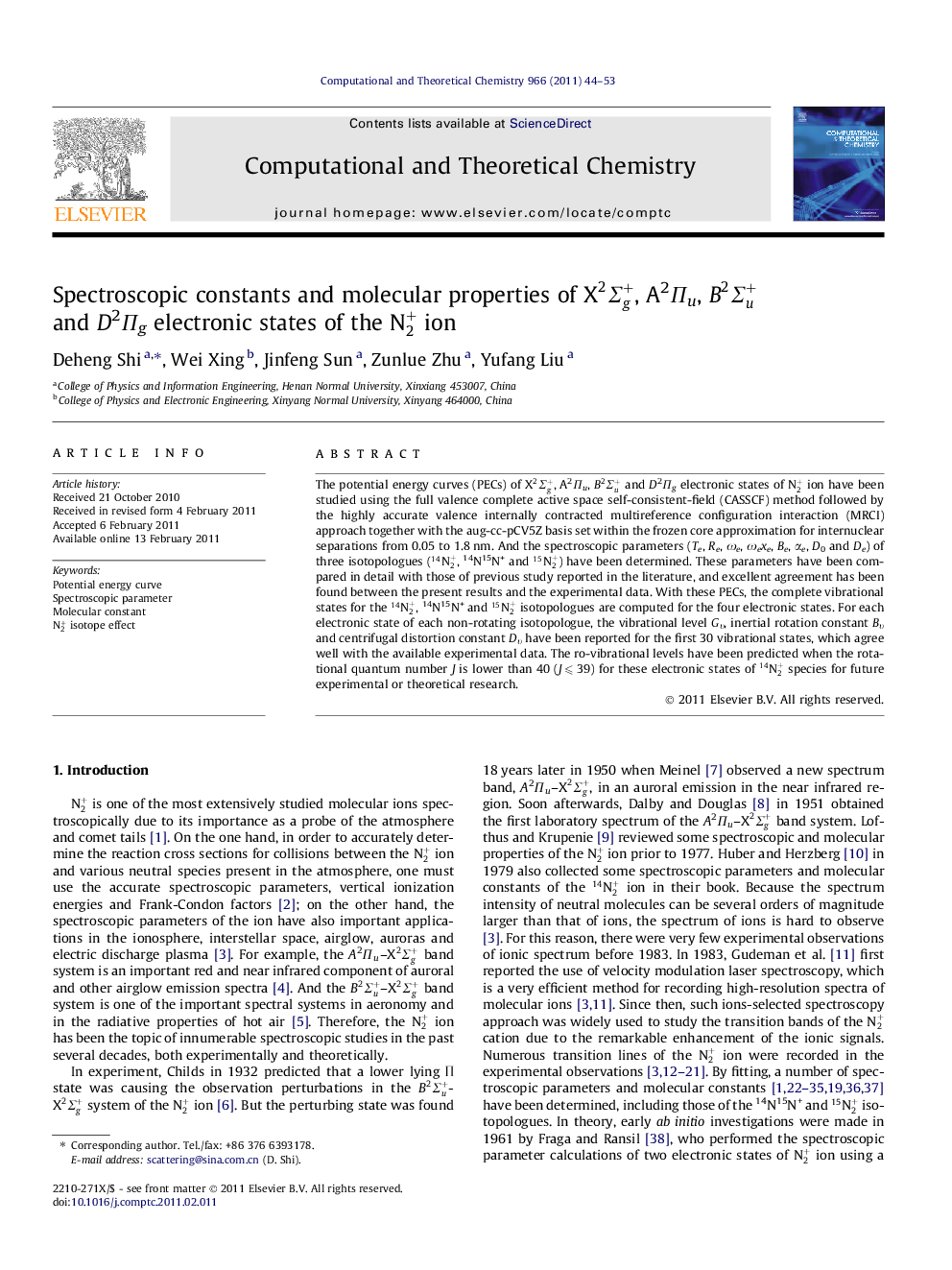| Article ID | Journal | Published Year | Pages | File Type |
|---|---|---|---|---|
| 5395227 | Computational and Theoretical Chemistry | 2011 | 10 Pages |
Abstract
The potential energy curves (PECs) of X2Σg+, A2Î u, B2Σu+ and D2Î g electronic states of N2+ ion have been studied using the full valence complete active space self-consistent-field (CASSCF) method followed by the highly accurate valence internally contracted multireference configuration interaction (MRCI) approach together with the aug-cc-pCV5Z basis set within the frozen core approximation for internuclear separations from 0.05 to 1.8 nm. And the spectroscopic parameters (Te, Re, Ïe, Ïexe, Be, αe, D0 and De) of three isotopologues (14N2+, 14N15N+ and 15N2+) have been determined. These parameters have been compared in detail with those of previous study reported in the literature, and excellent agreement has been found between the present results and the experimental data. With these PECs, the complete vibrational states for the 14N2+, 14N15N+ and 15N2+ isotopologues are computed for the four electronic states. For each electronic state of each non-rotating isotopologue, the vibrational level GÏ
, inertial rotation constant BÏ
and centrifugal distortion constant DÏ
have been reported for the first 30 vibrational states, which agree well with the available experimental data. The ro-vibrational levels have been predicted when the rotational quantum number J is lower than 40 (J â¤Â 39) for these electronic states of 14N2+ species for future experimental or theoretical research.
Related Topics
Physical Sciences and Engineering
Chemistry
Physical and Theoretical Chemistry
Authors
Deheng Shi, Wei Xing, Jinfeng Sun, Zunlue Zhu, Yufang Liu,
